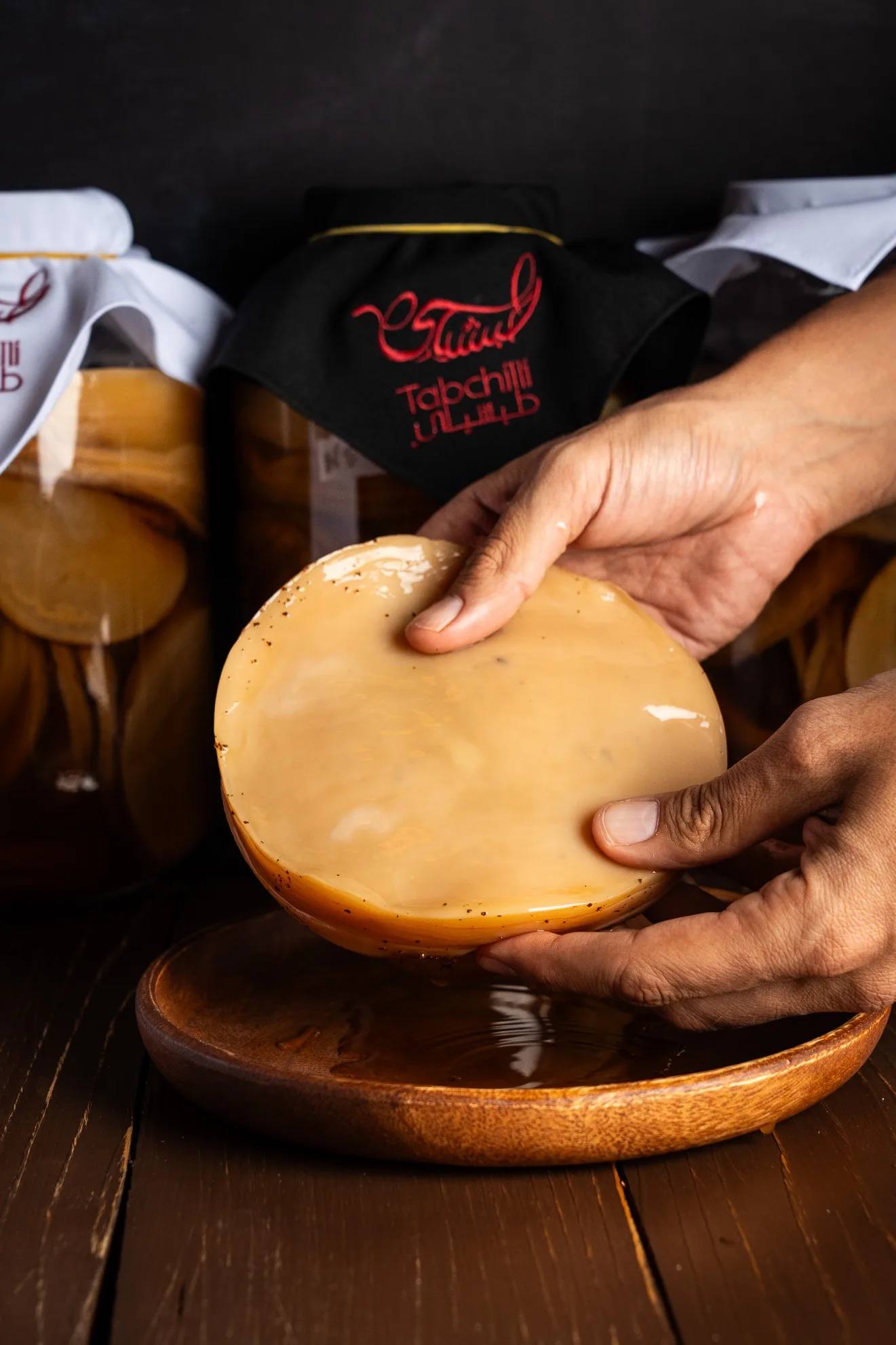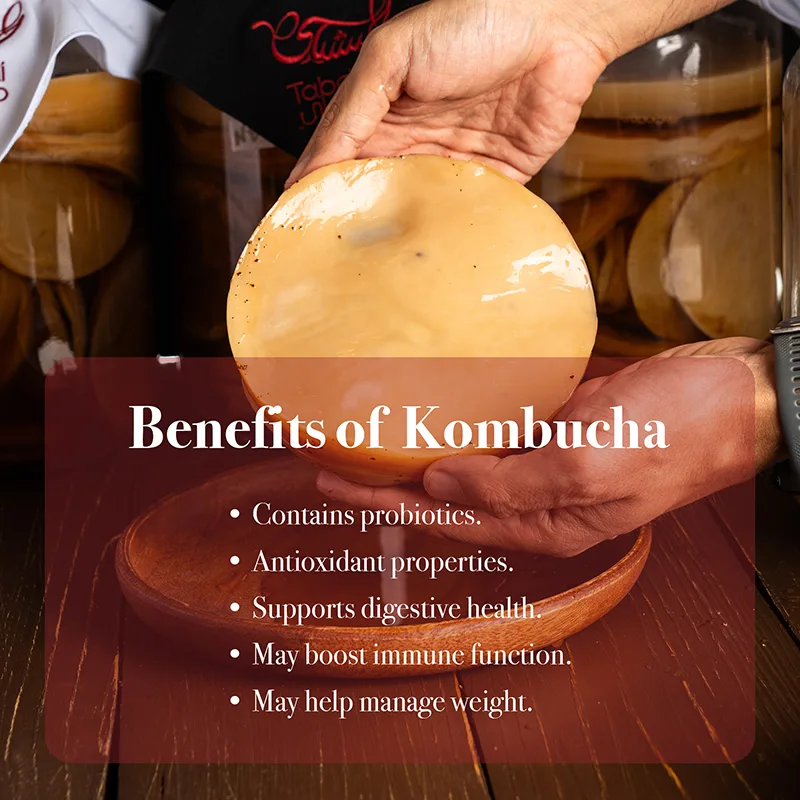Curious about kombucha? From brewing basics to advanced fermentation tips, we’ve compiled a comprehensive list of the most commonly asked questions about kombucha. Whether you’re a newbie or an experienced brewer looking to perfect your craft, this Q&A guide will help answer all your questions and ensure your brewing journey is a success.

At Tabchilli , we provide premium SCOBYs, DIY kombucha kits , and workshops in Dubai to get you started. Read on to learn everything you need to know!
1. What is Kombucha?
Answer: Kombucha is a fermented tea made by combining sweetened tea with a SCOBY (Symbiotic Culture of Bacteria and Yeast). The SCOBY feeds on the sugar in the tea, converting it into various acids, probiotics, and vitamins, resulting in a tangy, effervescent beverage. This
drink has been enjoyed for centuries and is known for its potential health benefits, including improved gut health and digestion.
2. What Exactly is a SCOBY?
Answer: A SCOBY is the heart of kombucha brewing. It stands for Symbiotic Culture of Bacteria and Yeast. The SCOBY forms a rubbery, pancake-like layer that floats on top of your kombucha during fermentation. It helps transform the sweet tea into a probiotic-rich beverage by fermenting the sugars and producing healthy acids and carbonation.
If you’re in Dubai and looking for a SCOBY, Tabchilli offers fresh and high-quality SCOBYs perfect for beginners and seasoned brewers alike.

3. How Long Should I Ferment Kombucha?
Answer: Typically, kombucha should be fermented for 7 to 14 days. The exact time will depend on factors like room temperature, the strength of your starter tea, and your personal taste preference. In hotter climates like Dubai, the fermentation time may be shorter—around 5 to 7 days—due to the accelerated activity of the yeast and bacteria.
Taste test your kombucha starting on Day 5. If it’s too sweet, let it ferment longer. If it’s too tangy or sour, it may have over-fermented. Use it as a base for a new batch or dilute it with fresh tea.
4. Can I Use Any Type of Tea for Brewing Kombucha?
Answer: While you can experiment with various teas, the best teas for brewing kombucha are black tea, green tea, or a combination of the two. These teas contain the necessary nutrients to feed your SCOBY. Avoid using flavored teas with added oils, such as Earl Grey, or herbal teas like chamomile, as they can weaken the SCOBY over time.
If you’re looking to create a kombucha blend with herbal teas, consider adding them during the second fermentation to prevent damage to your SCOBY.
5. How Much Sugar Should I Use for Kombucha?
Answer: The standard recipe calls for 1 cup of sugar per 1 gallon of tea (approximately 3.8 liters). This may seem like a lot, but keep in mind that most of the sugar will be consumed by the SCOBY during fermentation. By the end of the process, the sugar content will be significantly lower.
You can experiment with reducing the sugar slightly, but be careful—without enough sugar, your SCOBY may not have sufficient nutrients to grow and thrive.
6. What Should My SCOBY Look Like?
Answer: A healthy SCOBY is typically thick, opaque, and slightly rubbery. It can vary in color from white to light brown, and it may have dark spots or yeast strands hanging from it. This is completely normal!
However, if you notice any black, green, or blue mold spots, it’s a sign of contamination, and you should discard the batch immediately. If you’re unsure, it’s better to start with a fresh SCOBY from a trusted source like Tabchilli in Dubai.
7. Why Does My Kombucha Taste Too Sweet?
Answer: If your kombucha tastes too sweet, it likely means the fermentation process is incomplete. The bacteria and yeast in the SCOBY haven’t had enough time to consume all the sugar. Let it ferment for a few more days, and taste it again. In warmer environments, like Dubai, the fermentation process may speed up, so check your kombucha regularly to find the perfect balance between sweet and tangy.
8. Why is My Kombucha Not Fizzy?
Answer: If your kombucha lacks fizz, it could be due to:
1. Insufficient Fermentation Time: Let the kombucha ferment a bit longer.
2. Weak Second Fermentation: To boost carbonation, add a little extra sugar or fruit to the bottle before sealing it for the second fermentation.
3. Leaky Bottles: Make sure you’re using airtight, pressure-resistant bottles.
For the best results, let your kombucha undergo a second fermentation in sealed bottles for 2-3 days. This will build up natural carbonation.
9. Can I Reuse the Same SCOBY for Multiple Batches?
Answer: Absolutely! A healthy SCOBY can be reused indefinitely as long as it’s well-maintained. After each batch, you’ll notice a new layer of SCOBY forming on top. You can leave it attached to the original SCOBY or separate the layers and store them in a SCOBY Hotel (a jar with kombucha tea) for future use.
If you’re brewing a lot of kombucha at home, this method allows you to scale up your production or share SCOBYs with friends.

10. Where Can I Buy a SCOBY and Kombucha Supplies in Dubai?
Answer: If you’re based in Dubai and looking for the best Kombucha SCOBYs, starter kits, and brewing supplies, look no further than Tabchilli! We offer:
1. Premium SCOBYs: Fresh, active, and ready for brewing.
2. DIY Kombucha Kits: Complete with everything you need, including a SCOBY, starter tea, instructions, and essential brewing equipment.
3. Workshops: Join our interactive workshops in Dubai to learn hands-on kombucha brewing techniques, troubleshooting tips, and advanced flavoring strategies.
Visit us at Tabchilli to get started on your kombucha brewing journey and master the art of fermentation!
1% of each order supports children with juvenile arthritis.